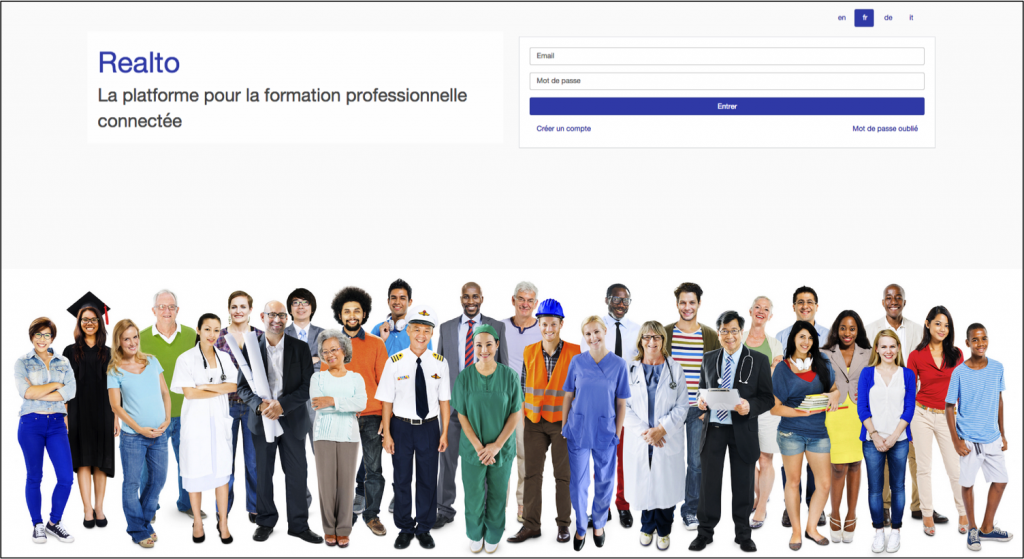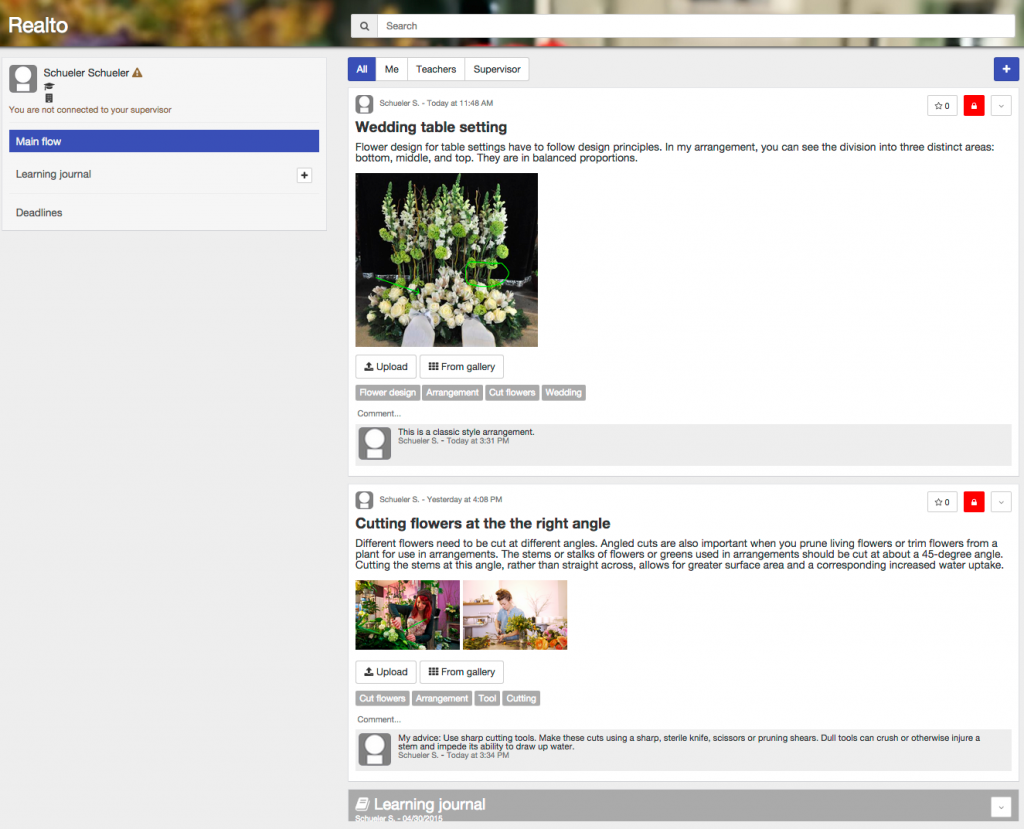
In Switzerland, the vocational training system by learning consists of three different learning contexts: the workplace, the vocational school and the center of inter-company courses. In each context, apprentices have access to various forms of knowledge.
This model of multiple contexts illustrates the vision of the Swiss system of vocational training is to teach both theoretical and practical knowledge. However, separation of these different contexts results in that the knowledge gained in a context is often not applied in other contexts. The multi-context approach often leads to a disconnected knowledge, inert and fragmented which can not be used in problem solving.

The Leading House DUAL-T develops and implements an online learning platform, REALTO, which aims to create links between the various contexts of vocational training and lead to a more integrated knowledge (see Figure 1). REALTO is a versatile platform that can be adapted to the specific needs of various professions and groups of users. REALTO was developed in constant collaboration with professional associations, teachers, supervisors, trainees and researchers (see the desktop version of REALTO here). REALTO development is based on the pedagogical model ‘Erfahrraum’, which describes the process leading to a shared digital space that creates links between physical contexts (Schwendimann et al., 2015).
In REALTO, apprentices use mobile applications to capture learning experiences through photos, videos, audio and text on their workplace (mobile apps are available for free: Android or iOS). Selected experiences can be shared with peers, teachers and supervisors, while others can be kept private.

Entries in REALTO are shown in chronological order (see Figure 2). Each input can be decorated with a title, a description, tags and comments. Photos can be annotated to put in evidence of the important features.
The thinking time is often limited to the workplace. REALTO allows the learner to quickly enter experiences and consult them later to think about it. Trainees can use their REALTO to write entries in their formal learning journal. The entries in the learning journal can be shared with the supervisor will assess and validate the documents.
REALTO aims to reduce the gap between learning contexts such as school and the workplace, in both directions. From school to the workplace, theoretical knowledge may become more understandable and have more meaning by linking to examples of situations encountered in the workplace. In the other direction, work experience can be used as part of school activities to illustrate some of the concepts taught during the course. Teachers may assign homework, such as taking pictures at the place of work in relation to a specific topic that will be discussed later in class. Entries generated by apprentices can be used as practical examples to illustrate abstract concepts.
Embed of video is only possible from Mediaspace, Vimeo or Youtube
Reference: Schwendimann, BA, Cattaneo, AAP, Dehler Zufferey, J. Gurtner, J. -L, Bétrancourt, M., & Dillenbourg, P. (2015).. The ‘Erfahrraum’: A pedagogical model for designing educational technology in dual vocational systems. Journal of Vocational Education and Training (JVET)